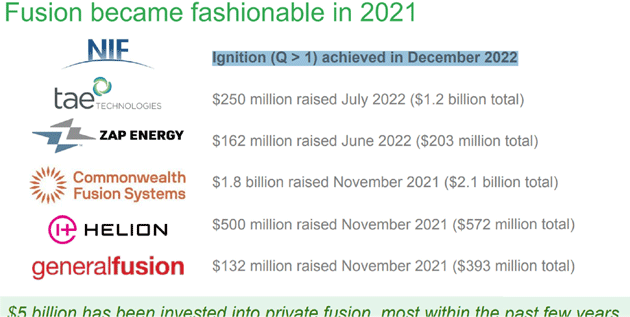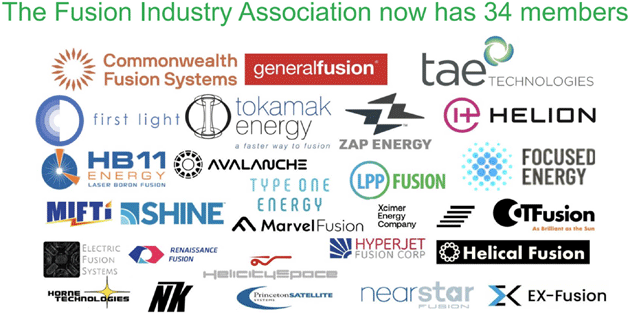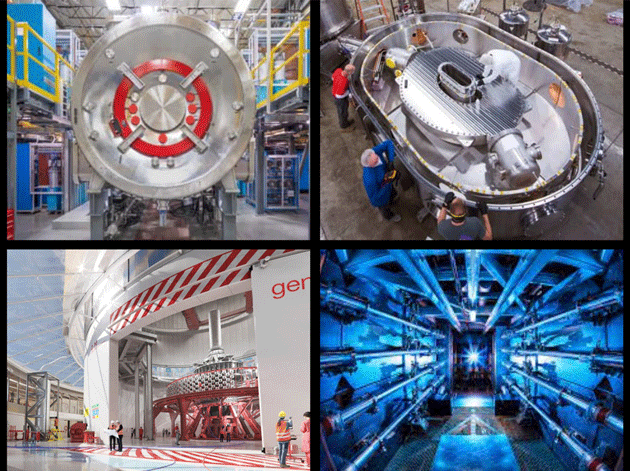
Technology Turning
-
 John Mauldin
John Mauldin
- |
- May 19, 2023
- |
- Comments
- |
- View PDF
We often talk about technology’s influence on the economy. After the Strategic Investment Conference, though, I’ve decided that isn’t strong enough. It’s more correct to say technology is the economy. But when I use the word technology here, I'm not talking about the big, nifty eight tech companies that dominate today’s stock market. I'm talking more about the entire scope of technological advances over the past 300+ years. None of our economy today is possible without those advances.
Broadly defined, technology is the practical application of knowledge. Humans learn things about the world and then use them to make life better. The improvements let us learn even more, which we apply again, in a repeating process going back millennia. Economics describes how we allocate these improvements through human society.
Until recently, technology developed slowly. Daily life didn’t change a great deal between, say, 1500 BC and 1500 AD. Ships still had sails (although we had learned to sail into the wind). Horses were the fastest means of ground transportation. Then the pace accelerated with the printing press, gunpowder, steam engines, electricity, radios, and more.
Now, older people (like me) have seen more technological progress in 50‒70 years than occurred in the prior thousand years—and it’s still accelerating. The world I inhabited as a young adult in the 1970s was, we thought at the time, a period of extraordinary change. Men had just walked on the moon! But it’s nothing like now.
The SIC itself is a good example. Who would have dreamed in the 1970s—when “live” TV and (very expensive!) long-distance phone calls were hot stuff—we would be able to gather virtually with people around the world, seeing, hearing, and interacting while never leaving home. Or do the same through a little box you could carry in your pocket wherever you happened to be.
Further, SIC also featured a kind of “time travel,” letting you go back and watch the sessions again or buy a virtual pass and join days or weeks later, almost like you had been there. It’s quite remarkable to think about… yet in 2023, it’s also quite normal.
We’ve seen enormous technological change in the last 70 years. The next 50 years will bring several multiples of it. Some will surprise us—technologies so revolutionary we can’t presently imagine them. Yet some of the change is already visible, at least as broad outlines.
SIC included multiple tech-oriented sessions—more than ever, and in hindsight I think it still wasn’t enough. We looked at battery and self-driving automotive technologies, artificial intelligence, and energy technologies—both fossil fuel and alternative sources like nuclear and fusion(!).
That last topic is more important than many think.
New Generation
Energy is the underlying technology of everything. Without abundant, inexpensive power to enhance our brains and muscles, humanity would be back in the Stone Age. Our global demand is growing, and supply needs to keep pace. No single source will suffice.
I’ve long said we are under-utilizing nuclear energy. This shouldn’t be controversial; nuclear has something for everyone. It’s cleaner than fossil fuels and, unlike wind and solar, can produce electricity around the clock in any weather conditions. The newest reactor designs address safety and cost concerns. We should be working full speed ahead to expand nuclear capacity, like China is… and certainly not closing fully operational plants, as Germany recently did.
I asked my partner Olivier Garret to moderate a SIC panel on nuclear energy. The panelists were Chris Levesque of TerraPower; Dr. Mike Goff from the US Department of Energy; and Amir Adnani, CEO of uranium miner UEC.
Amir started with an often-missed point: The US imports practically all of our uranium supply, and most of it comes from Russia and Central Asian countries. That’s obviously not great from a national security perspective. The nuclear capacity we need isn’t just reactors; we need a stable, preferably domestic fuel source.
Next, Mike Goff addressed some of the safety and environmental objections. Keep in mind, he represents the Biden administration, and he believes nuclear is critical to reaching its aggressive decarbonization goals. In terms of safety, nuclear is actually one of the best options. We think about headline events like Chernobyl, Fukushima, and Three Mile Island but those are exceedingly rare (and only Chernobyl resulted in deaths from nuclear radiation). Compare them against the less noticed but far more common (sometimes fatal) accidents in oil fields, refineries, coal mines, and even solar (people fall off roofs, etc.) and it’s not even close.
Nuclear waste is another common objection. Dr. Goff said it is a manageable problem. This is from the transcript (which you can get here).
“In the United States, we've had the largest fleet of reactors during our entire 60-plus years of operating commercial plants. We've only generated 83,000 metric tons of commercial spent fuel, which depending how you stack it… if that was just on the ground stored, it's a little bit larger than a football field. This is not a lot of waste we're talking about generating. And I'll point out from that 83,000 metric tons of spent fuel that we've generated we've saved the production of 400 million metric tons of CO2. Just to put these numbers in perspective, we've generated very little waste and we've saved a lot of CO2 emissions through that time.”
[JM—That is roughly 5,000 times more carbon saved than spent fuel accumulated.]
Chris Levesque talked about TerraPower (which Bill Gates co-founded, by the way) and its “Natrium” reactor designs. This will be an even safer and more efficient method than the current water-cooled reactors. The first site is currently under construction in Wyoming, supported by DOE. Mike Goff has worked on it and sounded very optimistic—mainly because the design is relatively simple and should be easy to replicate. It won’t be like the older generation where every site was different and thus more expensive. He thinks between Natrium and other new technologies, we will see a significant expansion in US nuclear capacity in this decade.
Like what you're reading?
Get this free newsletter in your inbox every Saturday! Read our privacy policy here.
Multiple companies are working on “modular” reactor designs, kind of like pre-fab homes, where you can literally build them in one location and install them anywhere else in the world, greatly reducing costs and construction time.
This is a good reminder of how technology progresses with time. The first efforts always look flawed in hindsight because we learn from them. We identify mistakes and find better ways. It’s happening in nuclear and many other fields.
Chemical Reactions
Another aspect of technology is how the lines are blurry. Energy powers everything, but the kinds of energy available to us depend on developments in other fields. Computer technology drove the shale energy revolution, for instance, enabling the analysis of vast data sets and identifying where to drill.
At SIC I asked my friend, venture capitalist Joe Lonsdale, to lead a panel on some of his investments in various technologies. The panel ranged far beyond the initial topic (one of my favorite aspects of SIC, by the way).
The panelists were Nathan Mintz of Spartan Radar, which works on automotive sensor technologies, and Gene Berdichevsky of battery tech leader Sila. Gene was one of the early Tesla leaders in batteries (the #7 employee) and left to pursue a broader vision for power storage. We’ll start there.
In Gene’s view, battery tech isn’t just for transportation; it is key to the bigger green energy vision. Storing large amounts of electricity helps solve the “intermittency” problem in wind and solar production. If you have enough battery capacity, you can store excess production to draw on at night or in low wind conditions. (I think nuclear and fusion may be even better solutions, but we need to move forward on all these fronts. Let the better tech win.)
Batteries are simply chemical reactions. You transfer an electrical charge into certain minerals and transfer it back out later. There are many different ways to do this, some better than others. Sila works on making batteries more efficient, lighter, and less expensive. The necessary raw materials are often even more scarce, so they seek alternatives there, too.
Nathan Mintz talked about the other big transportation megatrend, what he calls “software defined vehicles.” At some point, a vehicle’s components become generic and versatile enough that software dictates what the car can do. He described it this way.
“You can kind of break the software that comes down into cars into three buckets. You have the driving assistance systems or autonomous driving systems, the infotainment system, which is how you play with your radio and do your navigation and what have you. And then the drive train, so those that do electronic fuel control, battery management, et cetera.
“So those three different capabilities, what we're going to start seeing is more ubiquitous over the air upgrades where instead of having a recall involve going back to the dealership, it's more just upgrade your software, you're going to start seeing more multifunction, multi-mode things or your car behaving differently when it's in different types of environments.”
This goes far beyond the “self-driving” technology we see described in the media, and it’s coming fast. The economic consequences will be enormous—and likely beneficial as the demographics make the labor shortage even worse. Here’s Nathan again.
“The average age of a trucker in the United States or median age is approaching 50 at this point. With the generational change, people just aren't as interested in doing that kind of work. Even when a lot of these truck driving jobs are paying six figure wages right now.
“So long-haul trucking and others, I think automation is a good substitute to make sure that the country keeps moving. And we'll just accept it in the same sense that automation's taken over a lot of other aspects of our lives. Now there is some government pushback, particularly in California, there's legislation being introduced to try and ban that of course. But in other states, in Texas, you're going to see ubiquitous pilots and sort of scaling into commercialization as early as end of '24.”
Joe, Gene, and Nathan then moved into a fascinating conversation about the military uses of this technology—which, suffice to say, will have giant geopolitical implications. (Note: Joe was a co-founder of Palantir.) You can watch this panel or read the full transcript with your SIC Virtual Pass.
Brute Force
I design the SIC agenda to build to a crescendo. It was thus not an accident one of the last sessions was my interview with mathematical software pioneer Stephen Wolfram, whose software program Mathematica is ubiquitous in almost any advanced tech software. I believe AI will be an earth-shaking innovation on par with electricity, telecom, satellites, etc. We are beginning to see it with ChatGPT and similar systems, but this is only the beginning. It’s going to change our world.
For now, humans still have superior intelligence, and one mark of it is the ability to explain complex subjects in simple language. Stephen gave us a masterful description of what AI is and how these latest models work. And it turns out to be remarkably simple. I can’t begin to explain it better than Stephen did, so I’ll just give you a long quote from the transcript.
“The ultimate operation of ChatGPT is something bizarrely simple. All it's trying to do is [after] you've given it a prompt or some piece of text. Its goal is to continue that piece of text and it does that by adding essentially one word at a time. You have put in, (as an example) the cat sat on the... And it's going to try and figure out what's the likely next word. Maybe it's mat, maybe it's sofa, it could be lots of different things. How does it figure out that next word? Well, basically what it's doing is, it's read a few billion pages, about 4 billion pages from the web.
“That's most of the publicly accessible web. And it's also read a bunch of books and it's seen the text on the web and in books and so on. And it's seen there probably gazillions of examples of the sentence the cat sat on the mat. And so it knows, it's seen all those examples and it's kind of giving you the statistical average of okay, the next word is likely to be mat. And so that's what it will tell one. And the thing that happens is, there isn't enough data on the web to actually be able to say for any sentence you type in what the next word is going to be just based on the statistics of what's already on the web. So you have to have some kind of model, some kind of way to extrapolate from what's been seen on the web to what the likely next word will be.
“And the surprising thing is that we can't give a sort of hard scientific explanation why it works. Start with the idea of neural nets. This whole sort of mathematical construction of neural nets turns out to be something where the way that it extrapolates from what it's already seen is similar to the way that we humans seem to extrapolate. In other words, the words it produces are similar to what a human might produce. They seem reasonable to a human. Now the fact that it can keep going and produce a whole multi-thousand-word essay and that it continues to make sense is a very interesting thing. I don't think we could say we really understand exactly why that works. The fact that it doesn't wander off track, that's a non-trivial thing.”
John here again. In one sense, ChatGPT is just brute force. It has read and remembered more words than any human can, and it can analyze what words most often go together. But how it gets from there to writing long essays that actually make sense? Even the experts don’t know.
The results are occasionally bizarre, amusing, and even wrong. Fact-checking isn’t part of these systems yet. But it will be, and that will enable them to do certain things far better than humans can.
Should we fear this? Certain jobs are going to get automated, perhaps quickly. The Industrial Revolution had similar effects, replacing many farmers and craftsmen. Yet it took decades for the technology to spread. People adapted. We won’t have that luxury this time. It is going to be somewhat chaotic, and today's versions of Luddites will be screaming for the government to protect their jobs.
I’m sure we will talk more about AI at next year’s (20th anniversary!) SIC. Is it possible the AI will someday talk to us? That would be fun and possibly enlightening.
Fusion Is 30 Years Away Coming Soon
Like what you're reading?
Get this free newsletter in your inbox every Saturday! Read our privacy policy here.
The old joke is that fusion is always 30 years away and has been for the last 30 years. Except now it's not. I asked my friend Britt Harris to pull together a panel on energy and tech. Britt runs the University of Texas/Texas A&M pension funds (the largest endowment in the country, who was the CEO at Bridgewater and has more awards and is consistently rated among the top five asset investors in the world. He is literally at the center of the spider web of all things technology and investing. I will do a full letter around his presentation along with Terry Keeley on where energy is going, as it demands more than a few paragraphs.
But I do want to quickly highlight the presentation of Matt Trevithick on fusion energy. Matt now runs a VC firm called DCVC. Before joining DCVC, Matt was the COO of Google Quantum AI, and part of the team that first demonstrated that a quantum computer could outperform the world’s most powerful supercomputer on a particular task. Matt also directed a program of sponsored research in fusion energy and facilitated Alphabet’s investment in Commonwealth Fusion Systems. Yes, he is generally the smartest guy in the room.
Matt pointed out that fusion is no longer 30 years away. Let's look at some quotes from his presentation:
“[Fusion research] has happened very quietly, there is about $5 billion invested into what’s now about 100 fusion companies, most of that over the last few years.

Source: Matt Trevithick
“And that really culminated in December of last year in a spectacular scientific achievement at the National Ignition Facility at Lawrence Livermore National Laboratories here in California, where, for the first time ever, there was scientific proof that you could get more energy out of a fusion reaction than you put in to spark that reaction.
“Now there’s something called the Fusion Industry Association that includes 34 of those companies amongst their members.

Source: Matt Trevithick
“So, for the first time ever, the development of fusion energy technology is happening in the private sector on a fairly large scale. And there’s multiple well-funded entrepreneurial ventures pursuing this really in parallel with government efforts as well. Here’s an example of what a few of these apparatuses look like. Some of them are very large. Think of these maybe more like mainframe computers.

Source: Matt Trevithick
“But some of them are pretty small, they fit on a desk, maybe more like a laptop computer.
“…There’s two things I have come to believe about fusion energy: that multiple groups are going to achieve the scientific goal of energy breakeven by 2030. And the second thing I’m also confident of is, no one knows which technologies are going to win yet.
“… I would encourage us to be optimistic here. I believe that over the next 30 years, by 2050, energy could transition from a resource that some have and others want, to a technology that if you want more of the technology, you make more of the technology—kind of the way computers and smartphones have evolved.”

Source: Matt Trevithick
John here: We covered only a tiny, if very important, part of the technological advancement happening all around us. It's one reason I am so optimistic about the 2030s. We will discuss the less optimistic outlook for global debt and budget deficits in the next two letters, but ultimately, we will resolve that crisis.
Technology has kept advancing through multiple economic cycles. There is no reason to think this next economic crisis will slow down that advance. In fact, new technologies will create significantly more jobs than they disrupt. But those new jobs don't come at the same time old jobs are lost. All of this will be happening amidst economic crisis so it will be an interesting time. Fasten your seat belts and stay tuned.
Nashville and NYC
I will be in Nashville at Ben Hunt’s Epsilon Theory conference from May 28-June 1. I'm going to have to be in NYC later in June and likely Dallas as well. My son Trey arrives in a few hours to spend a few days. And my writing and reading schedule is never-ending. But it's all good.
The letter is a little long so no personal stories this week. I'll just hit the send button and let this marvelous piece of technology deliver my thoughts to your inbox, as it has for well over two decades. As always, have a great week and even in the midst of crisis and problems, remember to enjoy the incredible life our technology affords us.
Your still believing in the Age of Transformation analyst,

John Mauldin
P.S. If you like my letters, you'll love reading Over My Shoulder with serious economic analysis from my global network, at a surprisingly affordable price. Click here to learn more.
Put Mauldin Economics to work in your portfolio. Your financial journey is unique, and so are your needs. That's why we suggest the following options to suit your preferences:
-
John’s curated thoughts: John Mauldin and editor Patrick Watson share the best research notes and reports of the week, along with a summary of key takeaways. In a world awash with information, John and Patrick help you find the most important insights of the week, from our network of economists and analysts. Read by over 7,500 members. See the full details here.
-
Income investing: Grow your income portfolio with our dividend investing research service, Yield Shark. Dividend analyst Kelly Green guides readers to income investments with clear suggestions and a portfolio of steady dividend payers. Click here to learn more about Yield Shark.
-
Invest in longevity: Transformative Age delivers proven ways to extend your healthy lifespan, and helps you invest in the world’s most cutting-edge health and biotech companies. See more here.
-
Macro investing: Our flagship investment research service is led by Mauldin Economics partner Ed D’Agostino. His thematic approach to investing gives you a portfolio that will benefit from the economy’s most exciting trends—before they are well known. Go here to learn more about Macro Advantage.
Read important disclosures here.
YOUR USE OF THESE MATERIALS IS SUBJECT TO THE TERMS OF THESE DISCLOSURES.
Tags
Did someone forward this article to you?
Click here to get Thoughts from the Frontline in your inbox every Saturday.

 John Mauldin
John Mauldin
